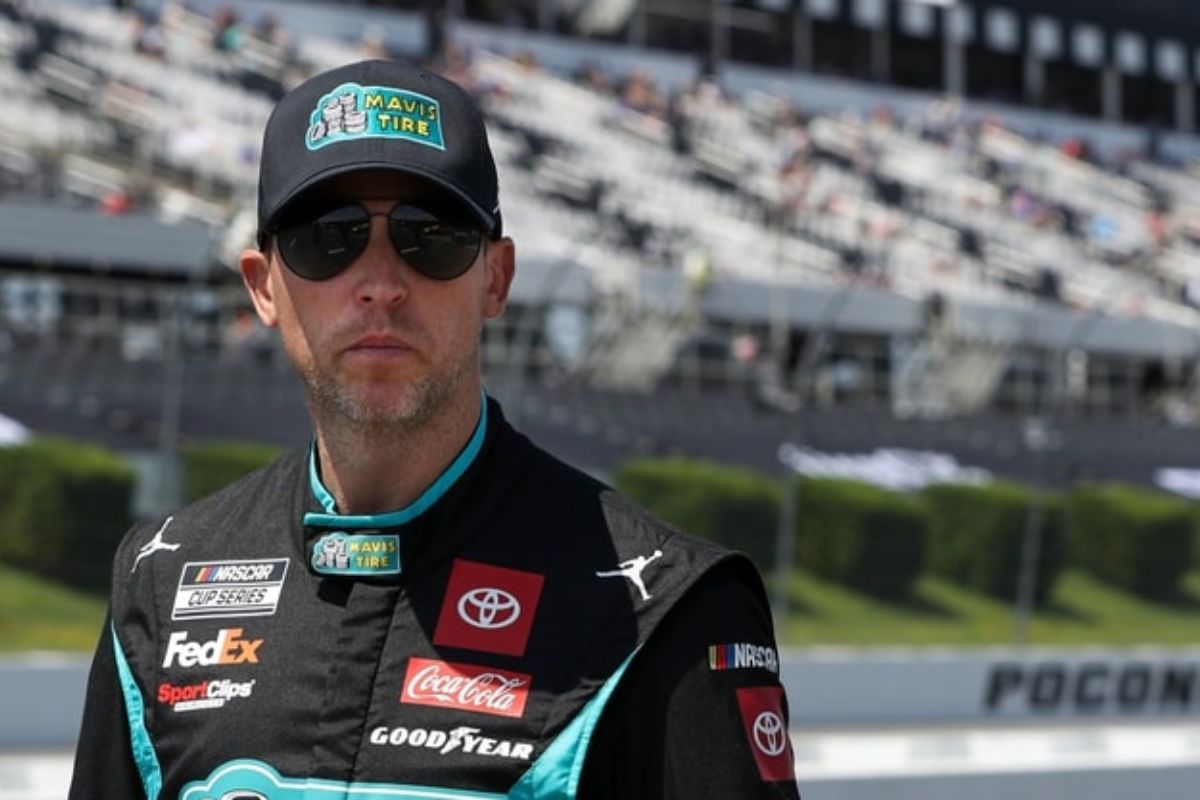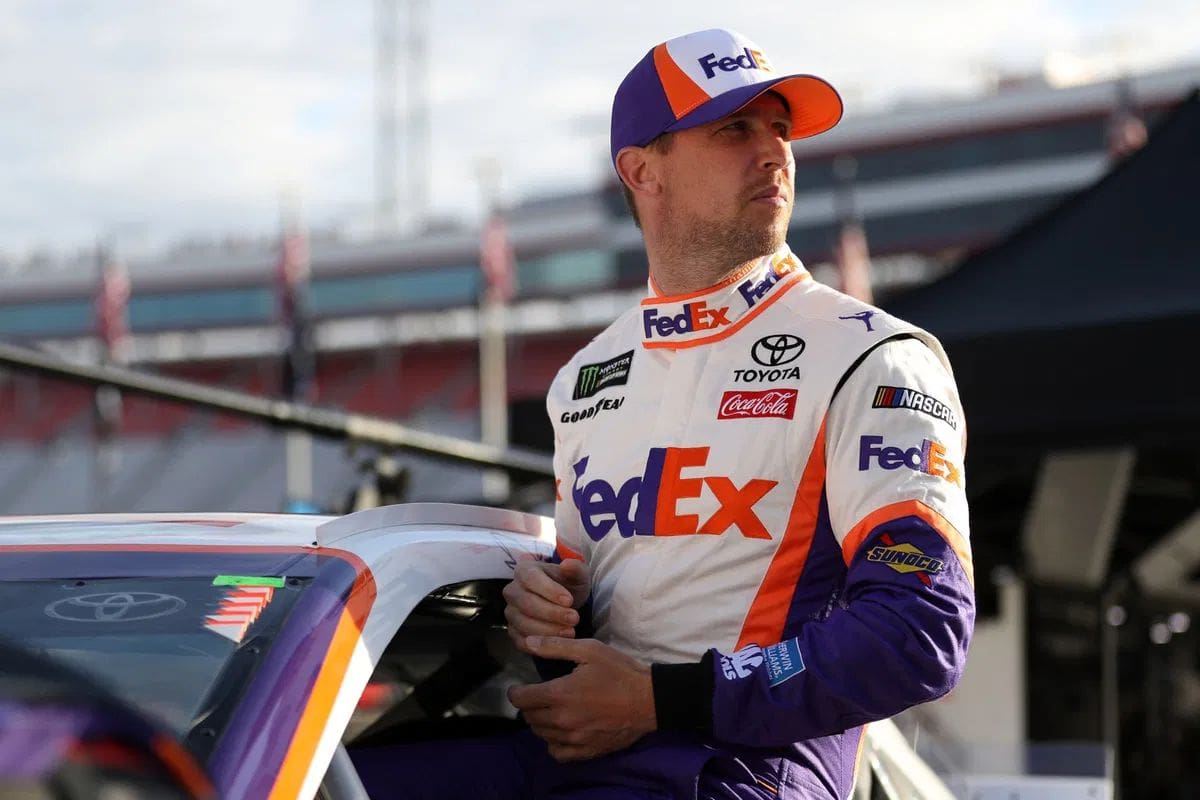Denny Hamlin’s Watkins Glen Strategy: Denny Hamlin‘s Watkins Glen strategy presents a compelling case study in tactical adaptability, particularly through the lens of Goodyear’s new tire formula. The introduction of softer tires improves grip and necessitates a nuanced understanding of tire degradation and performance management. Hamlin’s ability to balance aggression with conservation will be essential in navigating the track’s complex dynamics. This raises important questions about how race conditions may influence tire performance and ultimately shape race outcomes, prompting further examination of Hamlin’s tactical maneuvers in this scenario.
Key Highlights
- Denny Hamlin plans to leverage softer tires for enhanced grip, allowing for more aggressive driving and improved overtaking opportunities at Watkins Glen.
- The new tire formula requires careful tire management, prompting Hamlin to balance speed with tire longevity throughout the race.
- Hamlin’s experience enables him to adapt his strategy, either pushing aggressively early or conserving tires for a stronger finish.
- With increased tire falloff, Hamlin can capitalize on competitors’ struggles, using strategic pit stops to maintain track position.
- The shift away from fuel mileage strategies empowers Hamlin to focus on optimizing tire performance, essential for securing a victory.
Overview of the Watkins Glen Race and New Tire Formula
The Watkins Glen International race, spanning 2.45 miles, presents a unique challenge for drivers, particularly with the recent introduction of a new tire formula by Goodyear. Historically, this road course has favored Hendrick Motorsports, which has claimed victory in the last five races. However, the new tire formula introduces a notable variable, primarily characterized by increased tire falloff. This alteration compels drivers to adopt more nuanced tire management strategies, as the performance of their vehicles will likely deteriorate more rapidly than in previous seasons.
Tire management is crucial at Watkins Glen, where the combination of specialized turns and elevation changes tests both vehicle handling and driver skill. The introduction of softer tires may necessitate a re-evaluation of traditional race strategies, as the balance between speed and tire longevity becomes more critical.
Drivers will need to be astute in their approach, determining ideal pit windows and adjusting driving styles to preserve tire health while still maintaining competitive lap times.
Moreover, the race’s history of straightforward outcomes largely influenced by fuel mileage strategies may give way to a more dynamic and unpredictable race. As teams adjust to the new tire compound, the potential for unforeseen incidents and competitive shifts increases.
The stage is set for a riveting contest where tire strategy could ultimately dictate the race’s outcome, making it vital for drivers and teams to adapt swiftly to the evolving demands of the Watkins Glen International track.
Denny Hamlin’s Expectations with Softer Tires
With the introduction of softer tires at Watkins Glen, Denny Hamlin finds himself optimistic about the potential benefits these changes may bring to his racing strategy. The development of a softer tire formula by Goodyear is expected to create more noticeable tire falloff, which could greatly influence the dynamics of the race. This new characteristic allows drivers to investigate varied strategies, improving overtaking opportunities and enabling teams to adapt to changing track conditions.
Hamlin’s recent struggles, particularly following a disappointing playoff race, have heightened his anticipation for the softer tires. He acknowledges that tire falloff will shift some control back to the drivers, enabling them to utilize their skills more effectively. As he stated, the ability to manage tire wear will pose a tactical dilemma: whether to defend track position aggressively or allow competitors to pass, banking on regaining the advantage later.
“I mean, certainly yes is the short answer. I feel better about it, but you’re still going to have cars pressing you and wanting to go and it’s then you’re going to have to weigh that option of do you let them go and lose that track position and then count on getting them back. It’s going to be interesting for sure, so I certainly like, you know, the tire fall of it. Certainly puts it more in the driver’s hands than what we’ve had.”- hamlin
This inherent tension between preserving position and optimizing tire performance will be critical in shaping race outcomes. Moreover, the reduced dependency on fuel mileage strategies opens up new avenues for competition. Hamlin appears poised to take advantage of this element, emphasizing the need for thoughtful decision-making throughout the race.
Implications of the New Tire Formula for Race Strategy
Embracing the new tire formula at Watkins Glen could considerably reshape race strategies for drivers, particularly for veterans like Denny Hamlin. The introduction of a softer compound allows for a more aggressive driving style, offering seasoned competitors the opportunity to dictate their own fate.
Hamlin, at 43, stands poised to utilize this advantage by either adopting a more assertive early-race approach or opting for a conservative strategy that prioritizes tire conservation.
The dichotomy between these strategies is critical; an early gamble on speed could yield substantial track positions but risks premature pit stops, potentially jeopardizing the complete race outcome. Conversely, a longer, more measured pace could facilitate tire longevity, possibly enabling Hamlin to advance through the field as competitors experience degradation.
This shift in tire dynamics fundamentally alters the traditional reliance on fuel mileage as a primary race strategy. Drivers now possess a more direct influence over their performance, which improves the tactical complexity of the event.
The recent dominance of teams like Hendrick Motorsports at Watkins Glen highlights the necessity for teams to recalibrate their tactics in view of Goodyear’s new offerings.
Feedback from Drivers and Goodyear’s Expectations
As the implications of the new tire formula continue to unfold, feedback from drivers and Goodyear’s expectations provide valuable insights into how these changes may impact the competition at Watkins Glen. The recent tire tests involving drivers such as Austin Cindric, Daniel Suarez, and Tyler Reddick have generated significant observations that could shape racing dynamics in the upcoming events.
Key takeaways from the tests include:
- Lap Time Loss: The softer tire compounds revealed a notable drop in performance, with drivers reporting a loss of two to five seconds per lap, indicating potential challenges in tire management during the race.
- Fall-off Projections: Goodyear’s Director of Racing, Greg Stucker, anticipates an average fall-off of around three seconds per lap as tire degradation sets in, which may lead to more tactical racing as drivers adapt their approaches over longer stints.
“Based on our test, and a subsequent [Wheel-Force] test with the manufacturers, we should see around three seconds of fall-off per lap over a run. That, of course, can mean more passing throughout the race. It’s always tricky on road courses as drivers take advantage of a limited number of ‘passing zones,’ so the increased fall-off should lead to more comers and goers as some drivers manage their tires and gain on the field as the runs go on.” – Stucker
- Increased Passing Opportunities: The expected tire wear will likely create more passing opportunities throughout the race, as drivers who manage their tires effectively could capitalize on their competitors’ struggles.
- Tactical Implications: The combination of tire fall-off and limited passing zones necessitates careful strategy, as drivers will need to balance aggressive maneuvers with tire preservation to maintain competitive performance.
These insights underscore the evolving nature of race strategies at Watkins Glen, emphasizing the critical role of tire management in achieving success amidst the challenges presented by the new Goodyear compounds.
Looking Ahead: Race Dynamics and Fan Expectations
Anticipation is building around the upcoming race at Watkins Glen International, particularly regarding how the new tire dynamics will influence both race strategies and fan engagement. Goodyear’s introduction of a softer tire compound is expected to substantially alter the competitive landscape, potentially improving overtaking opportunities on the 2.45-mile road course. This innovation aims to create a more dynamic racing environment, inviting closer battles and tactical depth as drivers navigate tire wear and performance fluctuations.
As the stakes rise in this pivotal playoff race, the implications of improved tire performance could be profound. Every driver will have to adapt their strategy in real time, weighing options between aggressive maneuvers and tire preservation. This balance may lead to a wider array of racing tactics, compelling teams to refine their approaches to pit stops and fuel management.
Moreover, fan expectations are likely to soar as spectators anticipate a more exhilarating viewing experience. The prospect of increased on-track action could captivate audiences, intensifying engagement as they witness drivers push the limits of performance.
The question remains: will Goodyear’s soft tire compound indeed improve the race quality at Watkins Glen? While the answer lies in the unfolding action, the mere promise of heightened competition could transform the event into a spectacle that resonates with both seasoned aficionados and casual fans alike.
News in Brief: Denny Hamlin’s Watkins Glen Strategy
Denny Hamlin’s tactical approach at Watkins Glen capitalizes on Goodyear’s softer tire formula, which greatly influences overtaking dynamics and tire management. The integration of these new tires allows for a nuanced race strategy that balances aggression with preservation, enhancing competitive opportunities. As race conditions evolve, Hamlin’s adaptability and experience will be pivotal in maneuvering through the challenges of the track, ultimately positioning him as a formidable contender for victory in this high-stakes environment.
ALSO READ: Denny Hamlin’s Frustrating Reality Check: Are His Title Aspirations Fading Fast?



